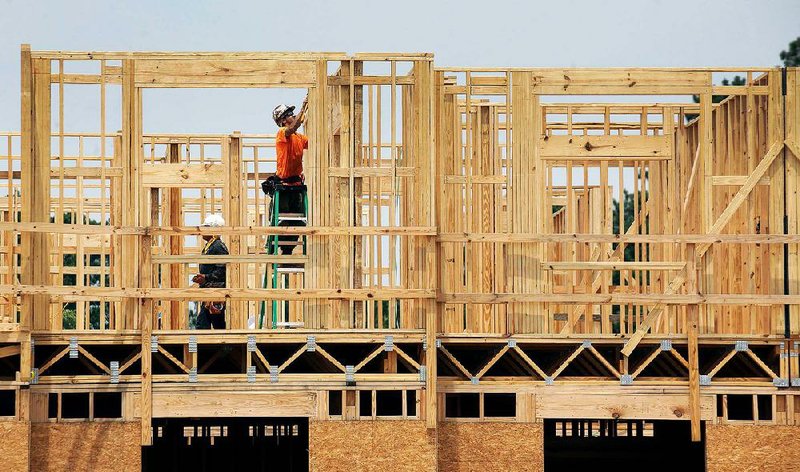WASHINGTON -- Construction of new homes fell slightly in November, reflecting weakness in construction of single-family homes.
Builders started construction at a seasonally adjusted annual rate of 1.03 million homes and apartments last month, the Commerce Department reported Tuesday. That was a decline of 1.6 percent from October when construction activity had posted a 1.7 percent gain.
The weakness last month came from a 5.4 percent fall in construction of single-family homes, which offset a 6.7 percent rise in the more volatile apartment sector.
Applications for building permits also were down in November, falling 5.2 percent to a seasonally adjusted annual rate of 1.04 million. Analysts are still looking for housing to regain momentum in 2015, believing that strong increases in employment will help home sales.
Economists called the November decline in construction disappointing but said part of the drop probably was caused by cold and snowy weather in many parts of the country. It was the coldest November in 14 years.
"Weather-related disruptions are temporary, and so we are not worried about this development," Patrick Newport, an economist at IHS Global Insight in Lexington, Mass., said in a research note.
Jennifer Lee, senior economist at BMO Capital Markets, noted that October construction activity was revised up by 3.6 percent and that September, October and November all showed construction above the 1 million mark.
She said strong job growth, low mortgage rates and easier lending standards should provide support for the housing market.
All regions of the country showed gains in November except the South, which accounts for almost half of all new-home activity activity. That region saw a 19.5 percent drop in construction. Construction showed the biggest jump in the West, an increase of 28.1 percent, followed by gains of 14.4 percent in the Midwest and 8.7 percent in the Northeast
Analysts believe the strong gains in employment this year will give consumers the confidence to buy homes and translate into moderate housing gains in 2015. While still a long way from the boom years of the previous decade, housing has been posting a moderate recovery over the past two years.
Recent turmoil in financial markets has pushed down interest rates, which combined with a strengthening job market means homebuying should appeal to more Americans next year, analysts said.
"All the conditions for stronger residential investment are in place for 2015," said Ryan Sweet, a senior economist at Moody's Analytics Inc. in West Chester, Pa. "An improving job market is going to do wonders for the housing market."
The National Association of Home Builders/Wells Fargo builder sentiment index fell slightly in December but remains in positive territory. The index reading in December was 57, down one point from a reading of 58 in November.
Any reading above 50 indicates that home builders view sales conditions as good.
New-home sales reached an annual rate of 458,000 in October, the highest point since May. Home prices continued to climb, increasing to a median price of $305,000 in October, up 16.5 percent from a year ago.
The gains in home prices have held back some activity, particularly among first-time homebuyers. Many lack the savings and strong credit history needed to afford a home. Tighter credit standards for potential homebuyers and flat wage gains also have dampened home sales.
Although new homes represent only a fraction of the housing market, they have an outsize impact on the economy. Each home built creates an average of three jobs for a year and generates about $90,000 in tax revenue, according to National Association of Home Builders data.
Information for this article was contributed by Martin Crutsinger of The Associated Press and by Victoria Stilwell and Alex Tanzi of Bloomberg News.
Business on 12/17/2014

